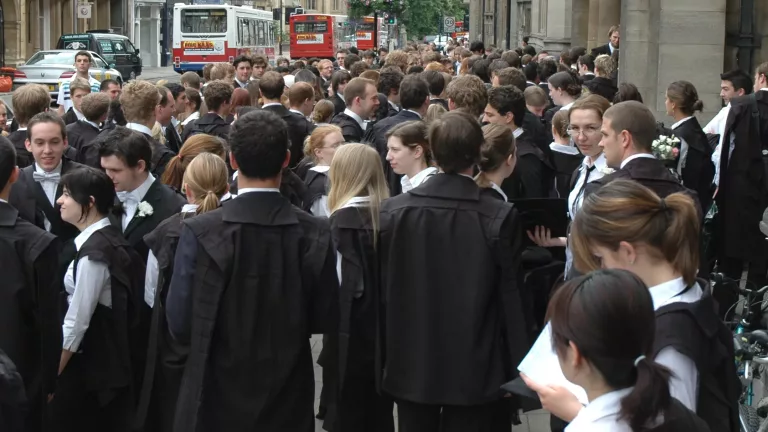Emma Jeffries: Educated: A Memoir by Tara Westover
It’s rare that I find non-fiction to be such a page-turner, but Tara Westover’s autobiography was just that. It reads more like a novel than biography, but the exciting passages of prose are interspersed with Westover’s reflections on the experiences she went through and her wider message about the importance of education in forming an individual. Despite being published in 2018, it is already a classic of our time; it was instantly a #1 New York Times Bestseller, as well as being positively reviewed by a number of major publications
Westover grew up in the mountains of Idaho to survivalist Mormon parents, and was the youngest of their seven children. Her parents did not believe in public schooling, modern medicine, or the government, and it is these fundamental beliefs that shaped Westover’s life. Throughout, she also understands that her memories are clouded by her upbringing and beliefs, as well as the emotions that she ascribes to her experiences. She therefore provides a non-sensationalist account of her life with a nuanced understanding of how abuse, mental health problems, and emotional response altered her whole family’s recollection of her childhood.
Westover is a long way from rural Buck’s Peak now. She graduated with honours from Brigham Young University in 2008, after being admitted there on a scholarship despite having no high school diploma. She went on to earn a Master’s degree from Trinity College, Cambridge, and in 2010 she was a visiting fellow at Harvard University. She earned her doctorate in intellectual history in 2014, returning to Trinity College, Cambridge, and is now working at Harvard University as a Senior Research Fellow as well as writing for The New York Times and BBC News.
Westover’s unusual path to success in academia resonated with me in particular as a current undergraduate student at Oxford University. Reading this over the Christmas vacation motivated me to get on with my reading (!), but also put into perspective my own privilege. Education, as Westover’s title Educated suggests, was one of the defining features of her life which allowed her to escape the abusive environment of her Mormon upbringing. Access to education, particularly the education as provided at top academic institutions like Oxford and Cambridge, allowed Westover to change her future and take control of her life, as well as give her the platform to write about and share her experiences with others. It was also education that allowed her to relate to the world around her and understand the world she was in.
Educated would be a great read if it were a work of fiction, but its real-world applications and resonances make it a truly brilliant book that highlights the importance of education in our world today, and makes me more seriously understand the extent of inequality and diversity of background present at my own university.
Georgia Campbell: The President’s Hat by Antoine Laurain
Antoine Laurain is not a name I had heard before coming across The President’s Hat in my local bookshop, but it is certainly not one I have forgotten since.
Described by its author as ‘a modern fairytale for adults’, the 2012 novel was inspired by Laurain’s own imaginings of the second life his hat might be enjoying on the head of someone else after he left it in a café in France. It traces the lives of four people: an accountant, an aspiring and love-lorn poet, a gifted perfumier, and a Parisian socialite, all of whom are transformed for the better following their discovery of the hat of then-President of France, François Mitterrand.
The novel is loosely episodic: the life of each character picks up where the hat is left- in a restaurant, train, or park bench- and with each change-of-hands Laurain paints a Parisian portrait more endearing than the last.
It is certainly not what could be described as a ‘difficult’ book, but throughout Laurain subtly reminds us of the powers of self-perception to alter the trajectory of our lives. Whether the hat is actually magic, as Laurain once suggested in an interview, or simply prompts its wearers to view themselves in a new light is left ambiguous, but the book is no less enchanting either way.
After reading, I was struck by how rare it is to find a book so resolutely life-affirming: in a world filled with online echo chambers and an increasingly individualistic ethos, the book suggests that our lives- whether we realise it or not- are always intersecting those of others. The stories of four radically different figures all become bound together by a single felt hat, and it is hard not to feel that- through the widespread popularity of the book itself- Laurain has fostered a new web of connections among an international audience.
At just 200 pages long, The President’s Hat is a quick, charming read that might be just the ticket after all the chaos of an intense Hilary term. It is full to the brim with character, connection, and all the delight of a certain French je ne sais quoi. I cannot recommend it highly enough.
Adam Saxon: The Black Tulip by Alexandre Dumas
“Sometimes one has suffered enough to have the right to say: I am happy”.
You almost undoubtedly will have heard of other works by Dumas Peré such as The Three Musketeers or The Count of Monte Cristo. Admittedly, the latter was the first work of his that I read; still today it is my favourite of the books I have read in recent years. Despite such enjoyment, it took me far too long to pick up another of Dumas’ works, but when I finally did over the summer, I am glad it was The Black Tulip.
A much lighter (and shorter) read than the works he is primarily known for, The Black Tulip follows the story of a tulip grower during the tulip mania that occurred during the 17th century in the Netherlands. We follow our hero Cornelius as he becomes caught up in the cut-throat politics of the time as a harmless man whose sole desire is to grow the elusive ‘black tulip’. It is a story of jealousy, love, and greed, tied together in unsurprisingly fantastic style by the excellent Dumas. While extravagant and far-fetched at times, it is a fun story that I would recommend as a gateway into the works of Dumas, as it gives a good taste of his writing style.
While a good introduction to his style, The Black Tulip is not a typical Dumas Story. Works like The Three Musketeers and The Count of Monte Cristo are known for their adventurous plots, with a certain level of mystery that is required to make such long books interesting. This recommendation is not that. However, it has other features that make it an underrated part of Dumas’ works, as a hilarious romantic comedy that is also a tale of betrayal and deception. The characters are lovable (in part due to their overbearing romanticism), and the slight insanity of the plot amplifies this further. It also explores love in a more serious way, however, and the lengths one is willing to go to in helping those whom they love. While I wouldn’t recommend it as a book for anyone fond of entirely realistic plots, The Black Tulip is an incredibly enjoyable read, and certainly an accessible classic, especially by Dumas’ standards.











